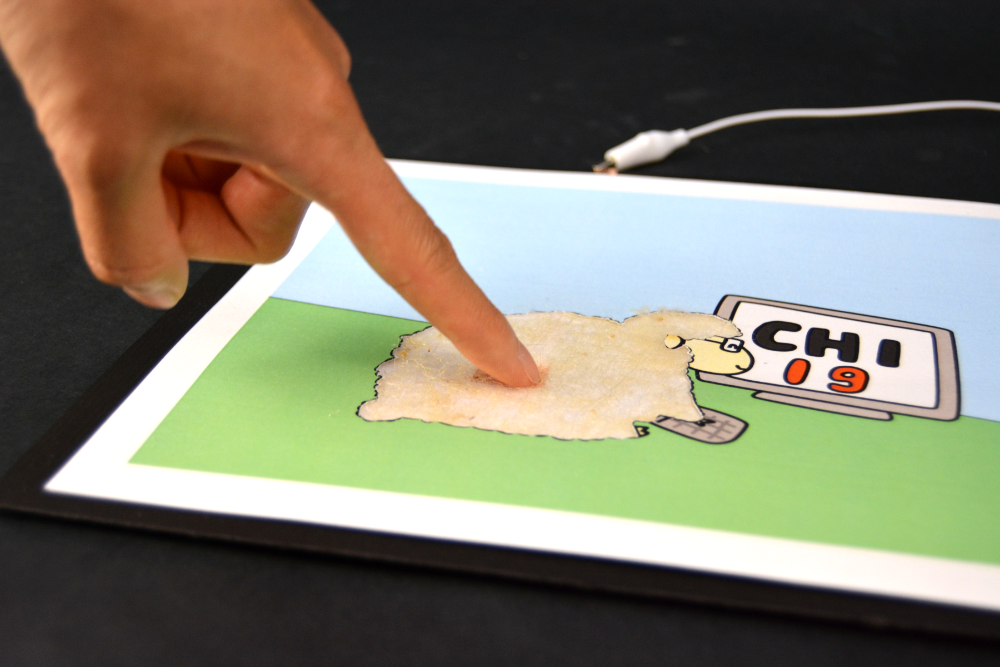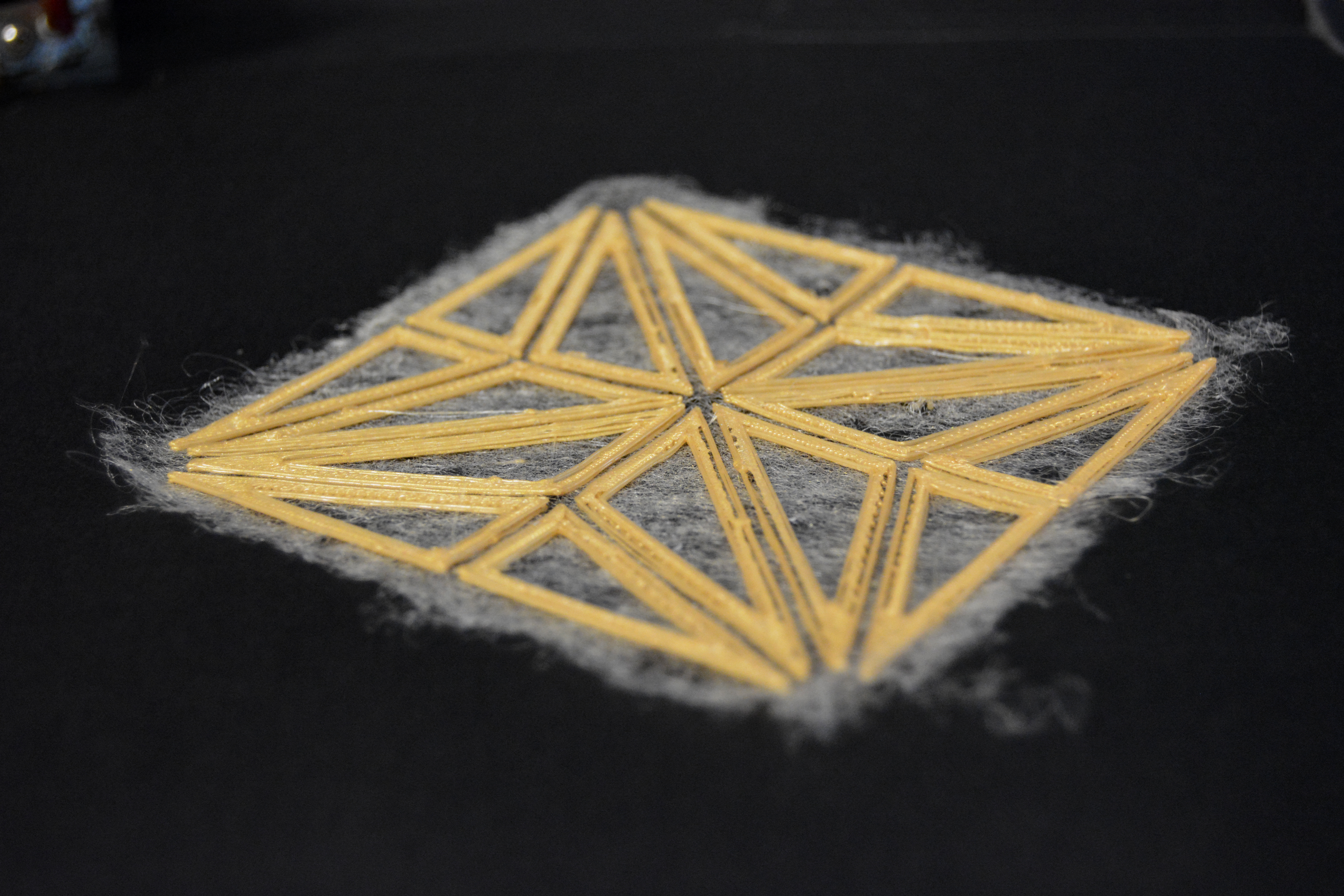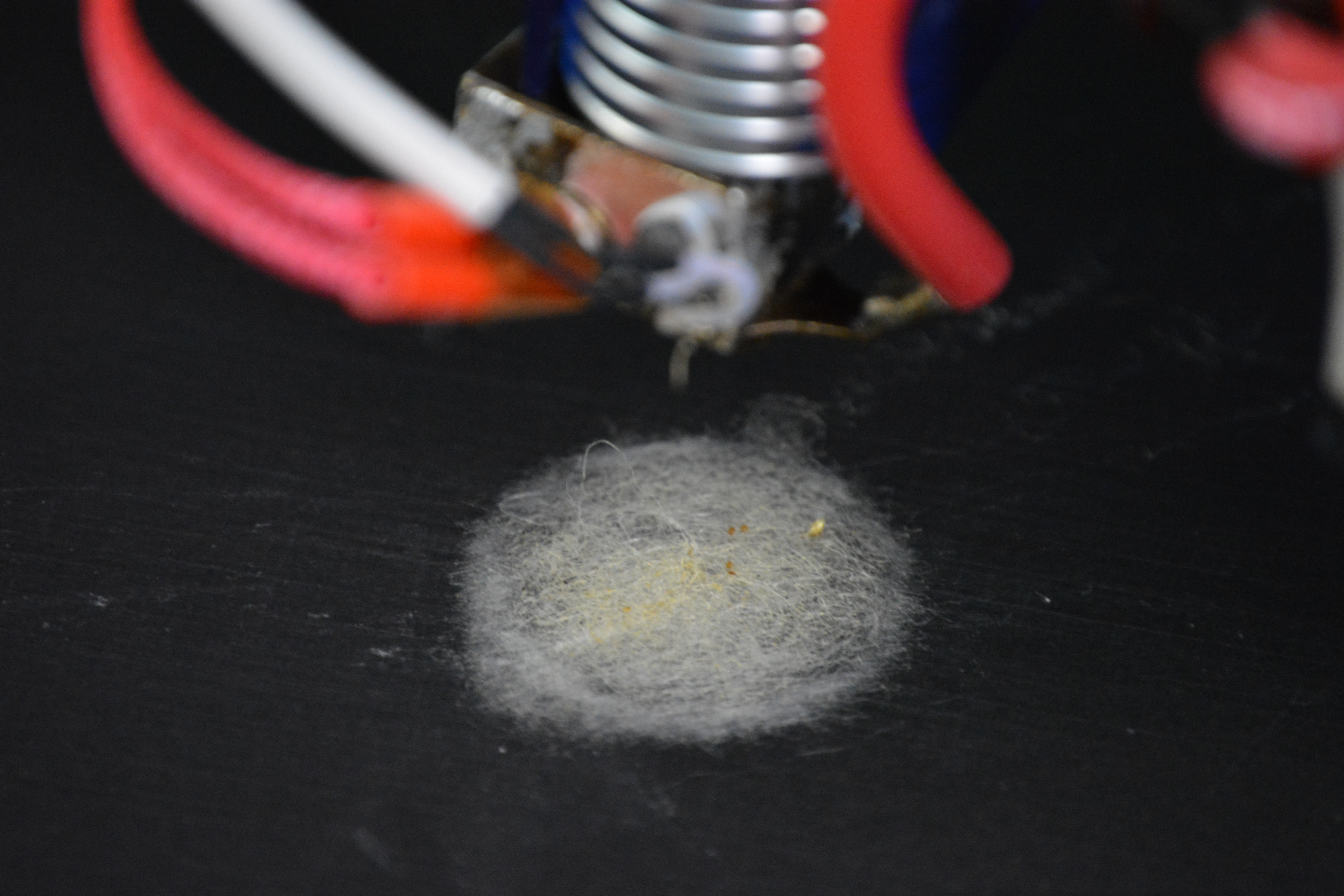Textile fabrication has seen novel applications in custom clothing and texture-based devices thanks to a modified FFF 3D printer from Carnegie Mellon University (CMU), in Pittsburgh.
Michael Rivera and Professor Scott Hudson of the Human-Computer Interaction Institute (HCII) at (CMU) pioneered the development of the open-source Prusa i3 for melt electrospinning capabilities. This has produced blended textile and 3D printed wearable objects.
3D Printing Industry spoke with Rivera, a Doctoral Student Researcher, on this textile-based plastics method, and how it has enabled the creation of novel interactive items.
Rigid plastics to fabrics
The HCII team tweaked the design of a Prusa i3 to have a larger, extensible build volume then added the modifications that support melt electrospinning. When asked about the inspiration behind this project, Rivera responded, “We previously explored how embedding textiles during a 3D printing process could create some useful and customized wearable objects like watch bands or a crown.”
“This current printer is a step towards blending textile fabrication directly into a traditional FDM 3D printing process. With the two combined, users could create interesting digital designs that support both types of material and fabricate the designs in a single process.”
“Such designs could also leverage the electrospun textiles for sensing purposes that can detect the presence of liquids and moisture or changes in pressure. [Also] we can imagine creating custom clothing that actuates open when someone is sweating too much, or a soft shoe insole or seat cushion that can detect how active (or inactive) a person is.”

Electrospinning and 3D printing
Electrospinning is widely used in biomedical engineering and material science communities to create tissue scaffolding and sanitary products such as bandages. Rivera adds, “We believe there are other interesting creative applications such as interactive clothing and tactile experiences. This process could also potentially be applied to create customized sanitary products such as diapers.”
“There are plenty of consumer-grade 3D printers out there, and there are also some expensive melt electrospinning set-ups that are much more controlled for the biomedical applications. Our work introduces a combined technique to other areas (like Human-Computer Interaction) broadening application domains.”
“With that goal in mind, our printer is the first 3D printer that combines both rigid plastic 3D printing and melt electrospinning together in a single process.”

Charging the fibers
With this process, a 30 mm x 30 mm swatch takes approximately 2 minutes to complete. However, the flat lamp shape shown above took 30 mins to print including the fabrication of the rigid plastic. PCL has also been successfully used in this process.
Now, the researchers are investigating other thermoplastics including Nylon, Polypropylene (PP), and TPU. They are also developing the electrospinning functionalities for more advanced materials.
“There are some challenges with melt electrospinning onto hard 3D printed structures that are non-conductive. Because the melt electrospinning process relies on electrostatic charges building up between the printing platform and the nozzle, as more plastic is printed between these two, the ability of thin fibers to be pulled down weakens.”
“We’re experimenting with applying other conductive materials (inks) onto hard 3D printed structures to enable spinning onto them.”

“Desktop Electrospinning: A Single Extruder 3D Printer for Producing Rigid Plastic and Electrospun Textiles” is co-authored by Micheal Rivera and Scott Hudson, and will be published next month.
Vote for your Research Team of the Year and more in the 2019 3D Printing Industry Awards.
Subscribe to our 3D printing newsletter and follow us Facebook and Twitter for the latest research in the field of additive manufacturing.Visit our 3D Printing Jobs board to find out more about opportunities in additive manufacturing.
Featured image shows an interactive 3D printed lamp. Photo via CMU/Michael Rivera.


